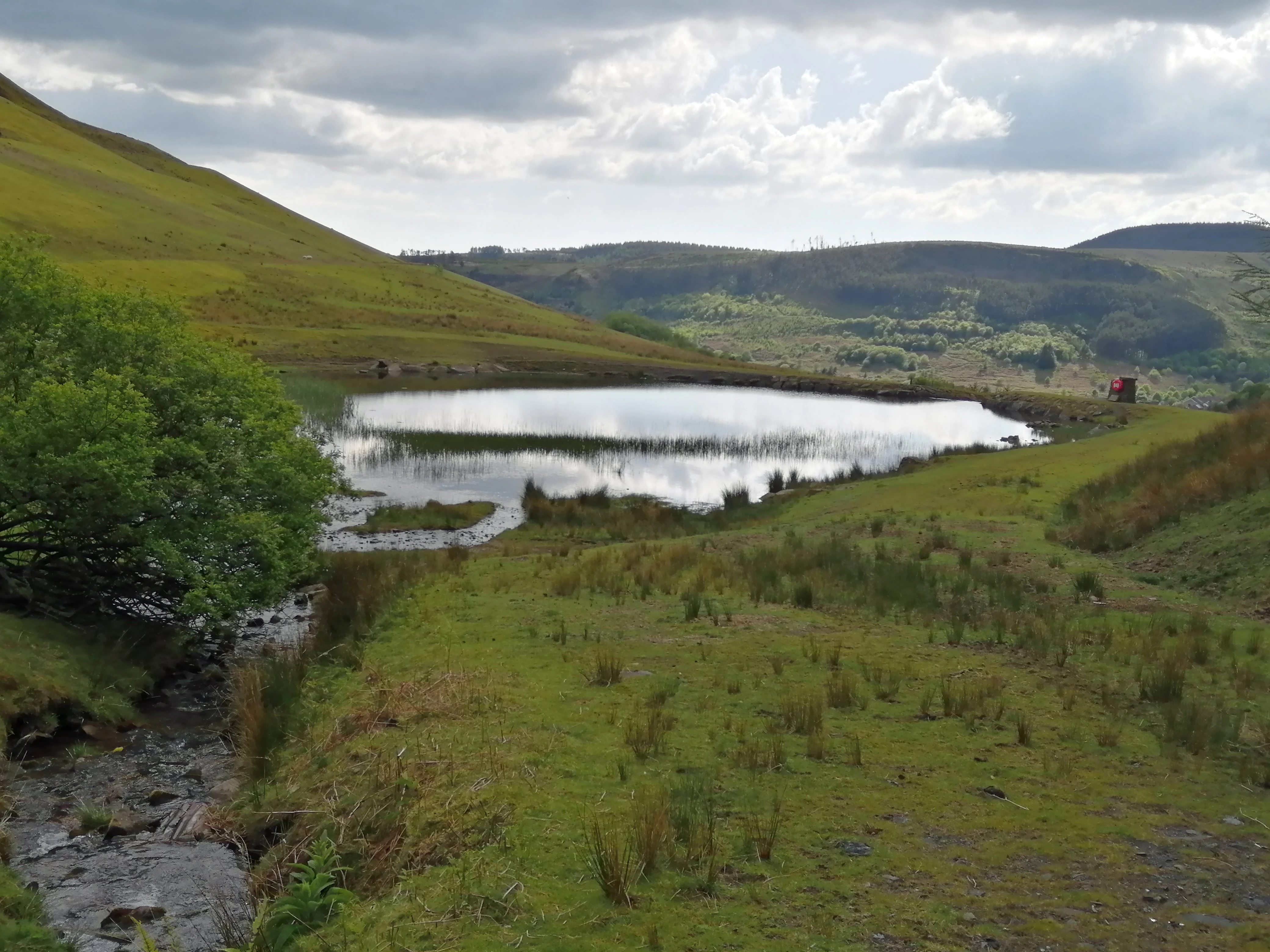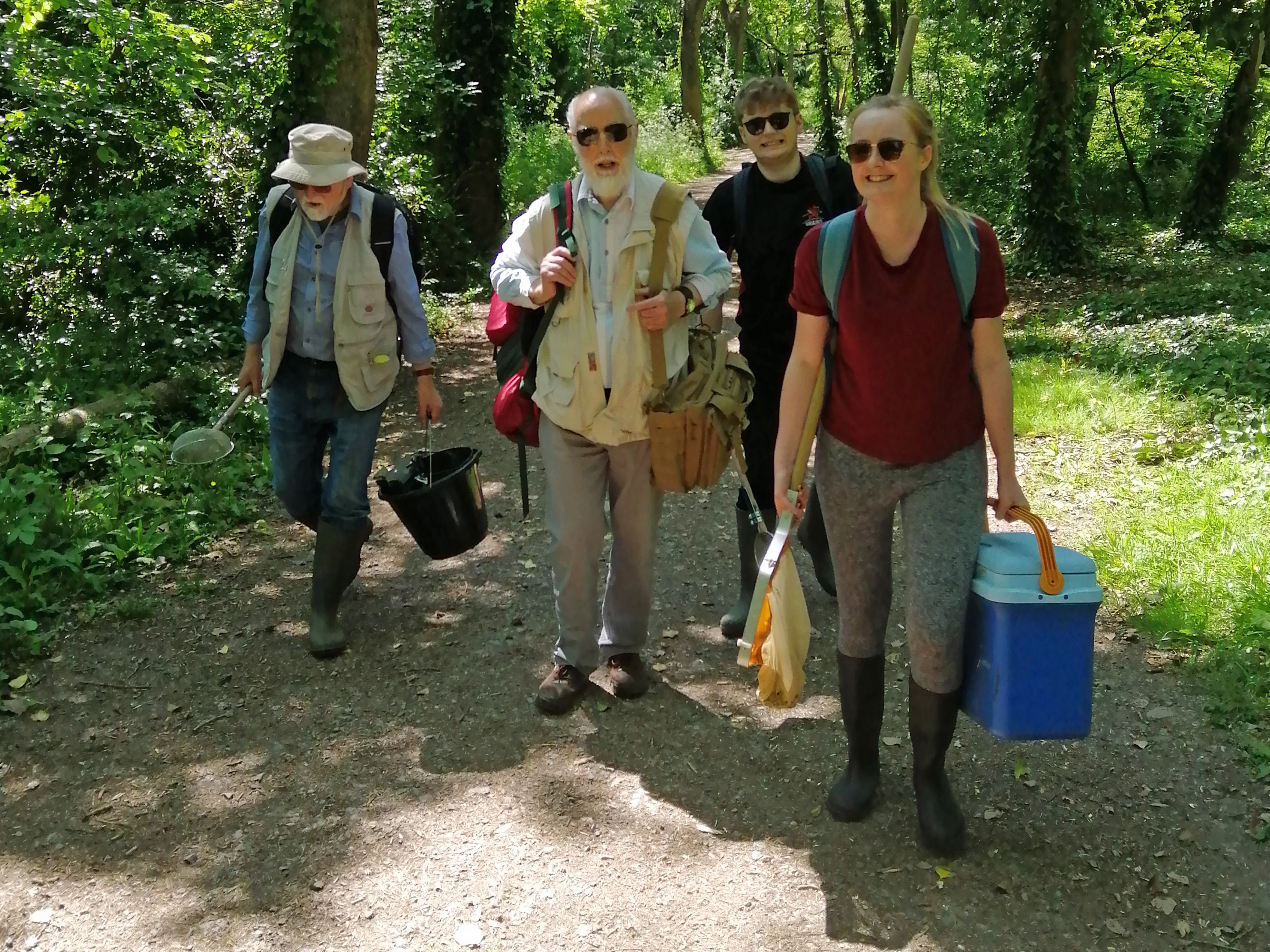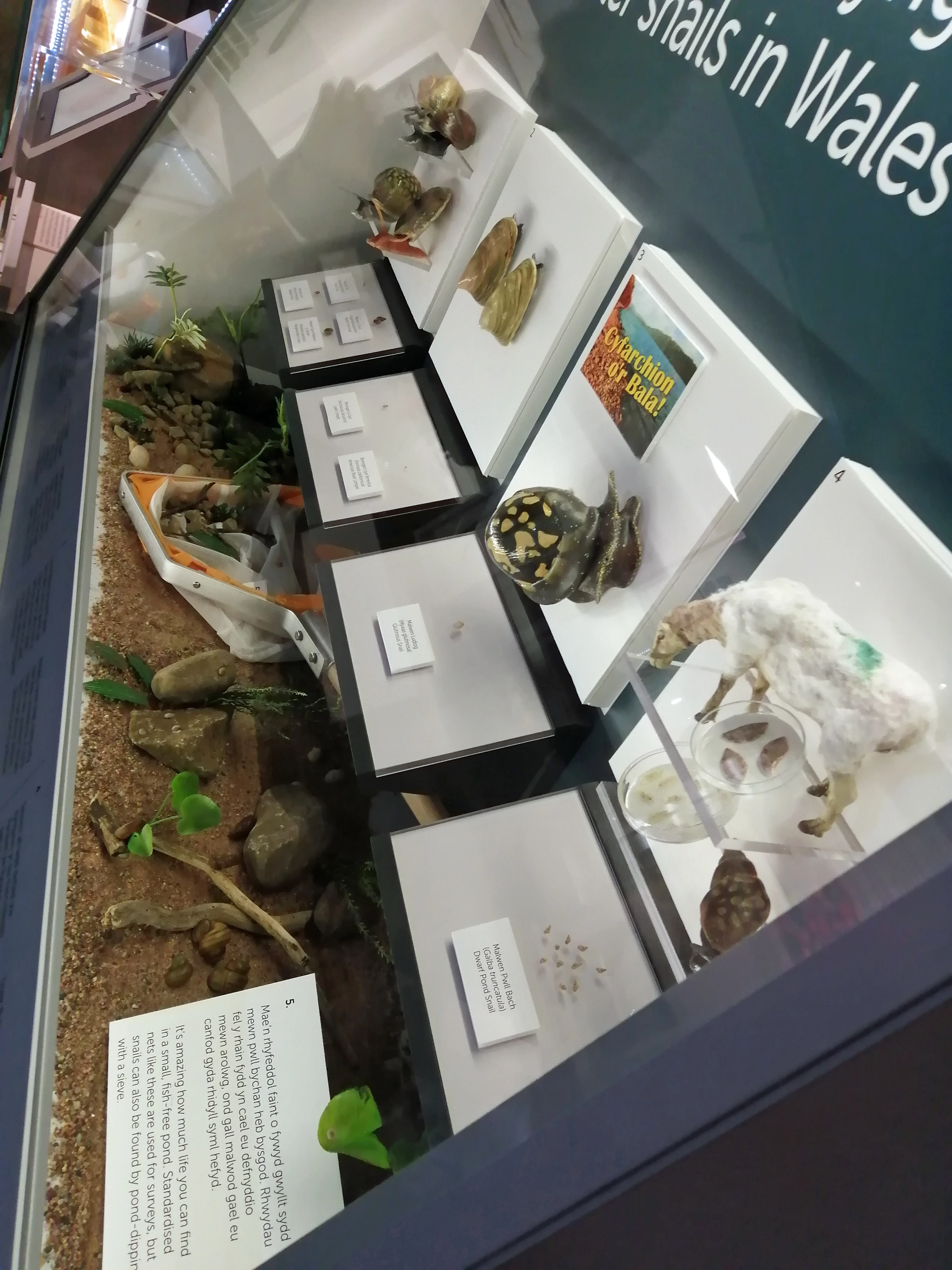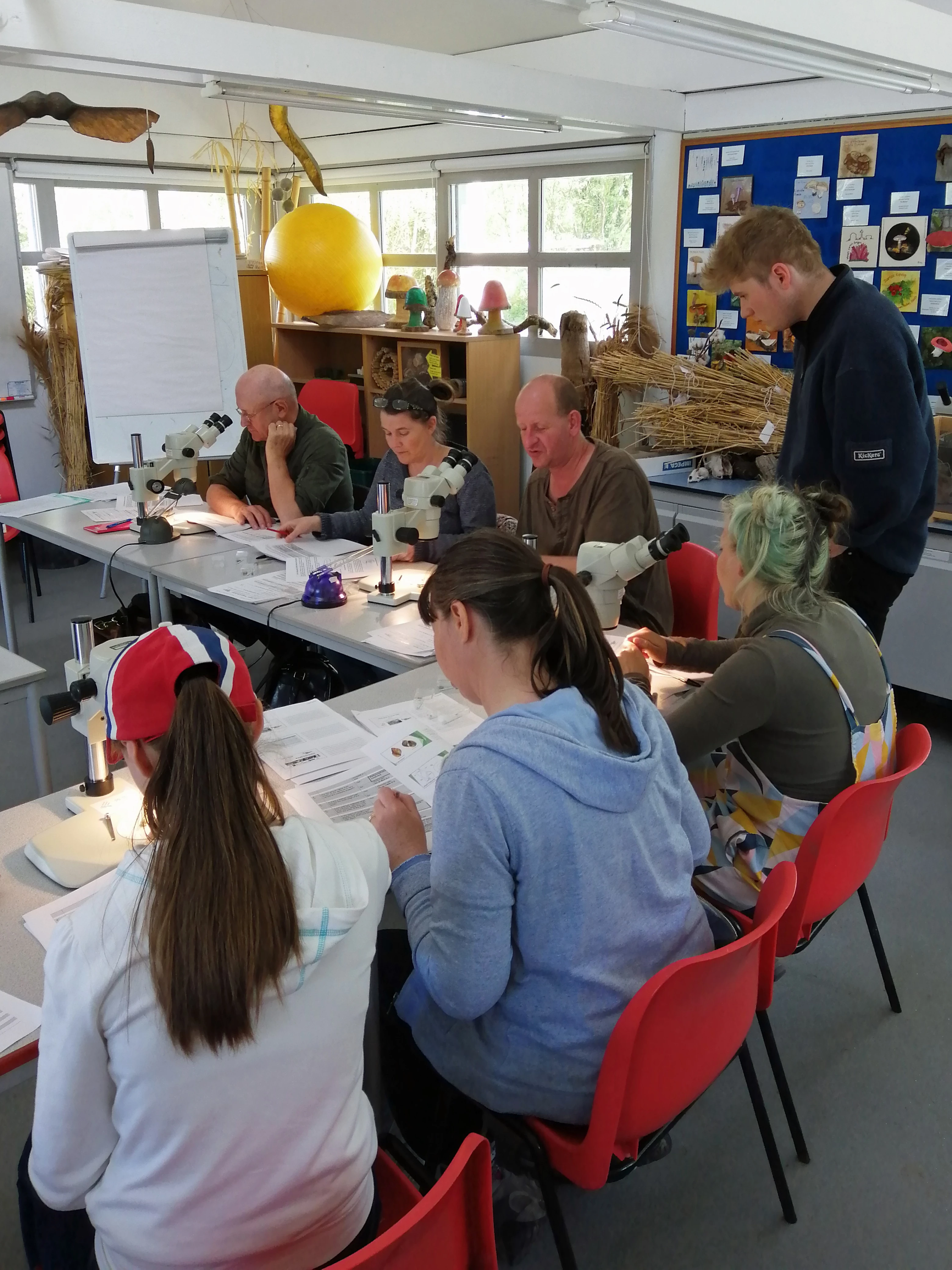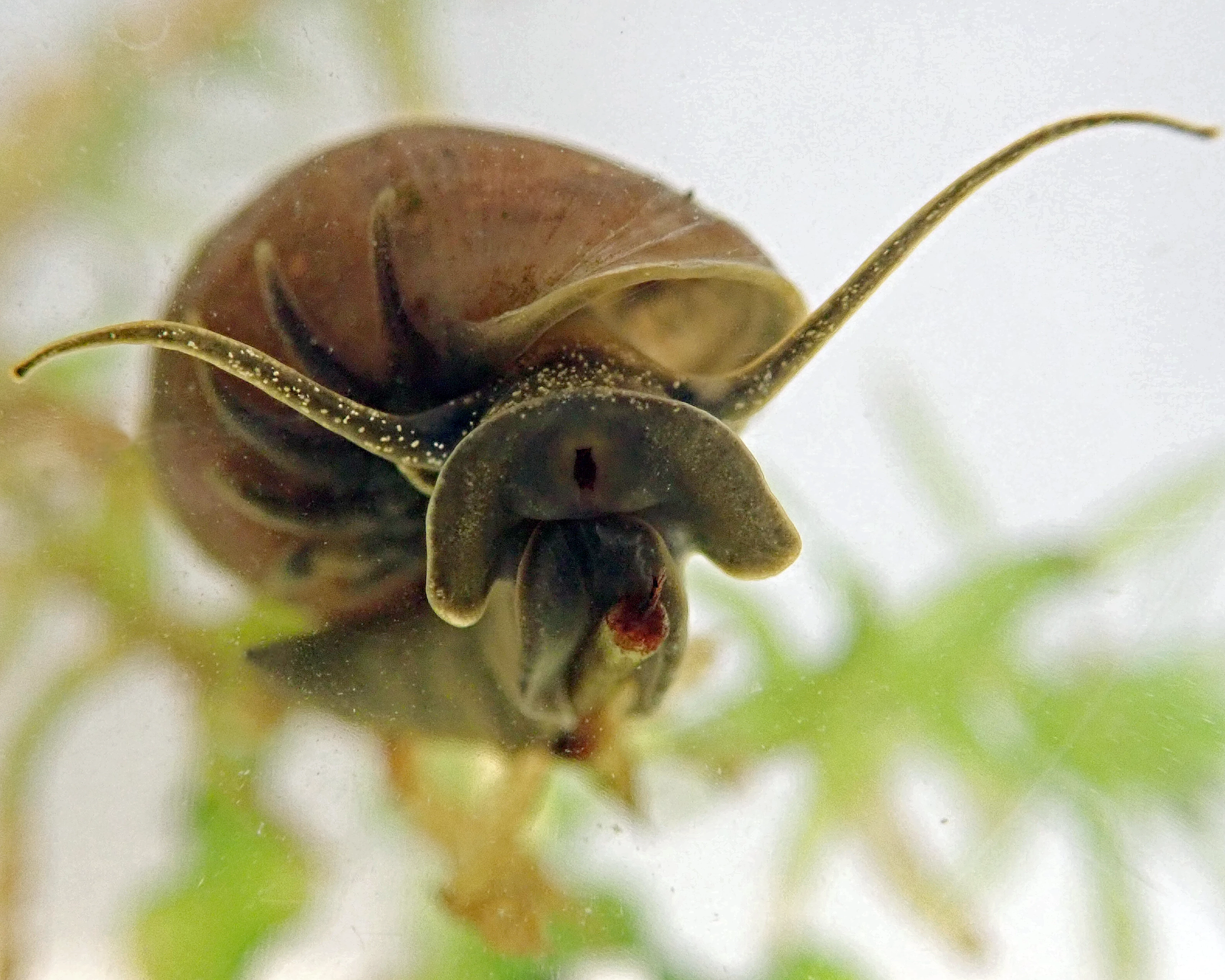“Brought to the Surface” Now in Full Flow
, 5 June 2019
“Codi i’r Wyneb - Brought to the Surface” is a project on freshwater snails led by the Museum’s Department of Natural Sciences, supported by the National Lottery through the Heritage Lottery Fund. Since our last blog in January, our project has grown from its wellspring in the collections to spill over into the outside world.
This, being midsummer, is pond-dipping season. Fieldcraft is so important to being a good naturalist, and also a good curator. No matter how good the collections, ID guides or apps, there is no substitute for finding things in their natural environment first-hand. So far we have identified and recorded snails from over 50 water bodies in South Wales alone, often with the help of local people and volunteers. As well as being good education for us, this has helped provide data and specimens from less well-studied areas, such as the lakes at Blaengarw, and the Neath Canal at Tonna, and the River Ely. We’ve also followed up a number of historical records to see whether species are still present. In a neat symbiosis, Alice Jones from Cardiff University has also been helping us out as part of her search for snail parasites and their microscopic predators. Lest anyone fear this is a Cymrocentric project, we’ve also been collecting in South-west England, and are heading East soon!
Back at National Museum Cardiff and with the help of the Exhibitions team, we installed our display in the Insight Gallery in time for the Easter school holidays. (In fact, all the displays in Insight have recently been refreshed, so it’s well worth visiting if you haven’t for a while). It features a variety of showcasing the diversity and importance of freshwater snails. To help bring the small shells of the Welsh species to life, we made magnified models of the living animals, approximately 1000 times actual size. These are shown alongside some grapefruit-sized tropical Apple Snails (the world’s largest freshwater snails), and their eye-catching bright pink eggs. The display also includes a mini-diorama of a British river, and a slideshow of images of the project’s progress. One thing which proved surprisingly hard to obtain (in Cardiff!) was an authentic-looking miniature of a sheep, so we made our own. The sheep is there to illustrate the life-cycle of the liver fluke - a big problem for British agriculture, yet one that hinges on tiny freshwater snails.
Since our last update we’ve taken part in public events including “Museums After Dark” and “Fossils from the Swamp”, and even appeared on the Radio Wales Science Café programme. The big one for us was our first Snail Day training course in late April, where we put our draft identification keys to the test. Held at Gwent Wildlife Trust’s Magor Marsh reserve, we are very grateful to the 8 members of the public prepared to be our guinea pigs, while learning as much about the 40 species as we could fit into a day. Our second Snail Day, at the “Aqualab” of the National Botanical Gardens in Carmarthenshire, was also a fully-booked success with thanks to the infectiously enthusiastic Paul Smith and our stalwart volunteer Mike Tynen, who helped amaze some visiting cub scouts by juggling a leech. The fish-free lakes at the Gardens have a huge biomass of snails!
Keen to join in? Our third Snail Day is on the 29th June, at the RSPB’s Ynys Hir reserve near Machynlleth, once used as the base for the BBC’s Springwatch. If you’d like to take part, please email harry.powell@museumwales.ac.uk. On Twitter, follow @CardiffCurator for the latest updates.

